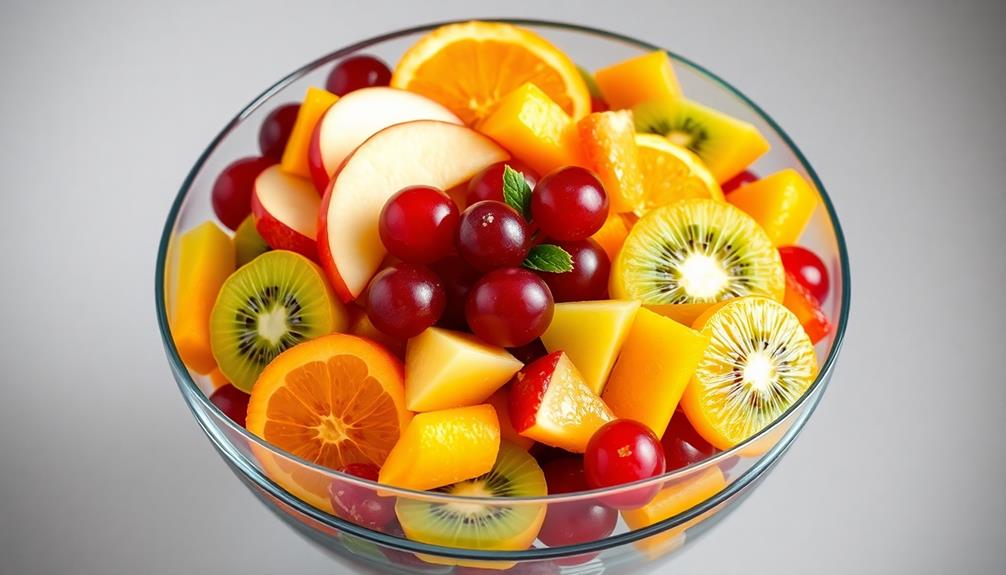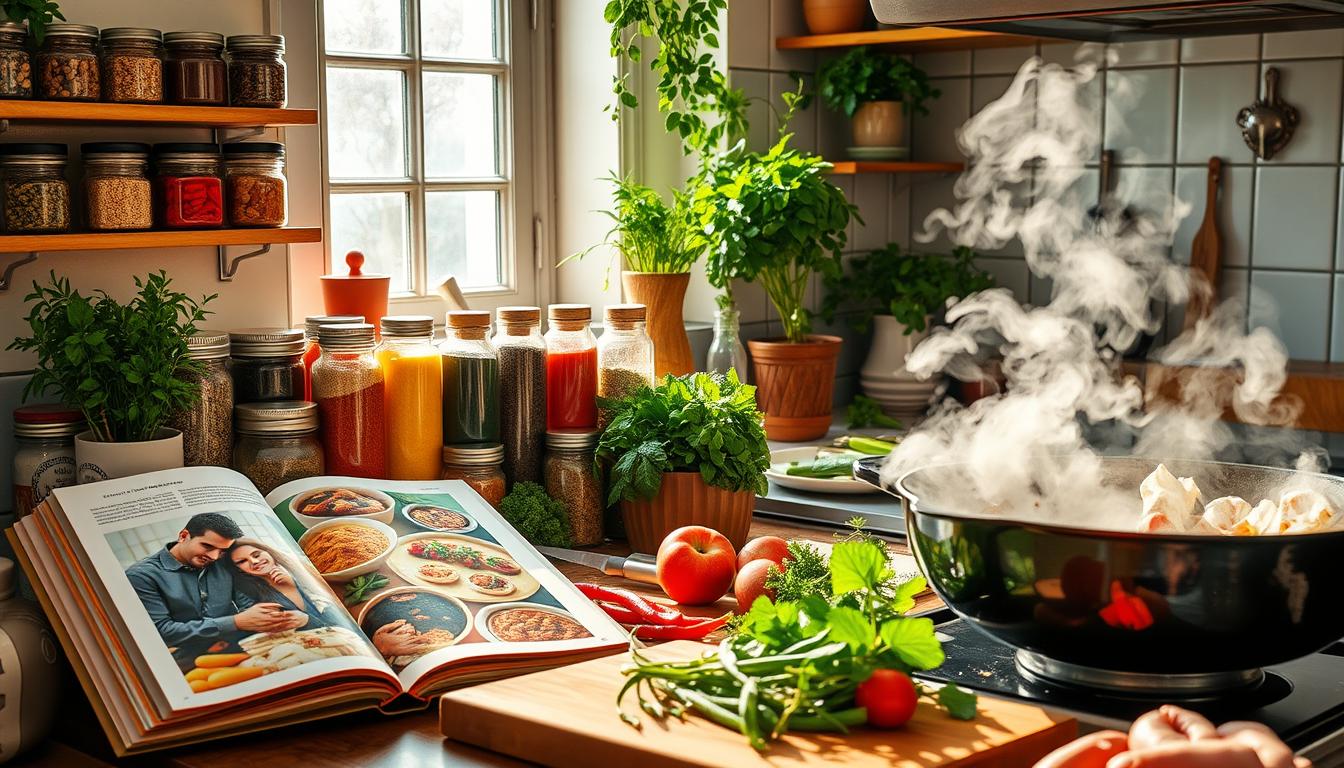Have you ever taken a bite of something so sumptuous that it instantly transported you to a world of culinary bliss? The intricate flavor profiles that dance on your palate can transform an ordinary meal into a memory that lingers long after the last bite. Each component, from sweet to umami, plays a vital role in crafting a gourmet taste experience that captivates the senses and excites the soul. As you embark on this journey of discovery, you’ll find that the right blends of flavors not only appeal to your appetite but also enrich your culinary repertoire.
By understanding the sophisticated flavor profiles surrounding you, you can learn to appreciate the subtle nuances of each taste, unlocking the potential for elevated flavor combinations that might have previously gone unnoticed. Whether you’re an experienced cook or just starting, there’s a gourmet adventure waiting for you in every dish. Together, let’s delve into the art of flavor and uncover the exquisite possibilities that lie ahead.
Key Takeaways
- Flavor is an essential element in the culinary experience, elevating meals to extraordinary levels.
- Understanding the five fundamental tastes—sweet, salty, sour, bitter, and umami—is crucial.
- Experimentation with diverse spice blends can lead to delightful new flavor pairings.
- Balancing complementary and contrasting flavors creates an engaging dining experience.
- Cooking methods significantly influence the texture and flavor of your dishes.
- Inspiration from global cuisine can enhance your cooking and broaden your taste horizons.
Understanding the Basics of Flavor
Exploring the essentials of flavor opens up a world of taste sensations that can elevate any dish. Learning the flavor basics, particularly the five fundamental tastes, is crucial for anyone looking to enhance their culinary skills. These tastes include sweet, salty, sour, bitter, and umami, each contributing uniquely to the overall flavor experience. Understanding how these fundamental tastes work together lays the groundwork for achieving a masterful flavor balance in your cooking.
Key Elements of Taste Sensations
The role of various flavor elements cannot be understated. Each taste adds depth and dimension, creating memorable and satisfying dishes. To better understand taste sensations, consider the following characteristics:
- Sweetness: Often found in fruits, sugars, and some vegetables, sweetness can balance acidity in dishes.
- Saltiness: Essential for enhancing flavors, salt can highlight the sweetness or mask bitterness.
- Sourness: Citric acid from lemons or vinegar contributes brightness and helps cut through rich foods.
- Bitter: Common in dark greens or coffee, bitterness adds complexity and depth to dishes.
- Umami: Found in ingredients like tomatoes and mushrooms, umami offers a savory richness.
Balancing the Five Fundamental Tastes
Achieving a well-rounded flavor profile involves recognizing the importance of flavor balance. When preparing meals, aim for a harmonious distribution of the fundamental tastes. For instance, combining sweetness with a touch of acidity can elevate a tangy barbecue sauce to new heights. Beginners and seasoned chefs alike can benefit from exploring how diverse ingredients create layers of flavor, ultimately influencing the overall flavor experience.
To illustrate the significance of flavor balance, consider this table showcasing how different tastes can complement each other:
| Primary Taste | Complementary Flavor | Example Dish |
|---|---|---|
| Sweet | Sour | Honey Lemon Chicken |
| Salty | Sweet | Chocolate-Covered Pretzels |
| Sour | Umami | Tomato Basil Pasta |
| Bitter | Salty | Dandelion Salad with Feta |
| Umami | Sweet | Mushroom Risotto with Caramelized Pears |

Exploring Sophisticated Flavor Profiles
Sophisticated flavor profiles represent a pinnacle of culinary artistry. These profiles include intricate combinations of tastes and textures that elevate the dining experience. Achieving sophisticated flavor profiles involves understanding how various taste elements work together, leading to memorable meals. The complexity in culinary experiences enhances not only enjoyment but also sophistication.
What Are Sophisticated Flavor Profiles?
Sophisticated flavor profiles incorporate a medley of tastes that appeal to the senses. They involve carefully curated combinations, including elements like sweetness, sourness, bitterness, saltiness, and umami. Each taste has a role, contributing to a dish’s overall harmony. Balancing these flavors can lead to complex flavor creations, ensuring that each bite brings something unique. Luxurious taste pairings, such as the rich flavor of foie gras with the subtle sweetness of caramel, exemplify this complexity beautifully.
The Role of Complexity in Culinary Experiences
Complexity plays a crucial role in enriching your culinary experiences. Layers of flavors can elevate even the simplest of dishes, making them extraordinary. Each essential taste interacts with others—for instance, umami flavors enhance the savoriness of rich sauces while balancing salty components. Sweetness can provide relief against bitter or spicy notes, making every bite more enjoyable. Chefs often aim for layered flavors, as seasoned dishes generally receive higher acclaim. You might explore luxurious taste pairings with ingredients like truffles, caviar, or gourmet spices to discover new gastronomic heights.
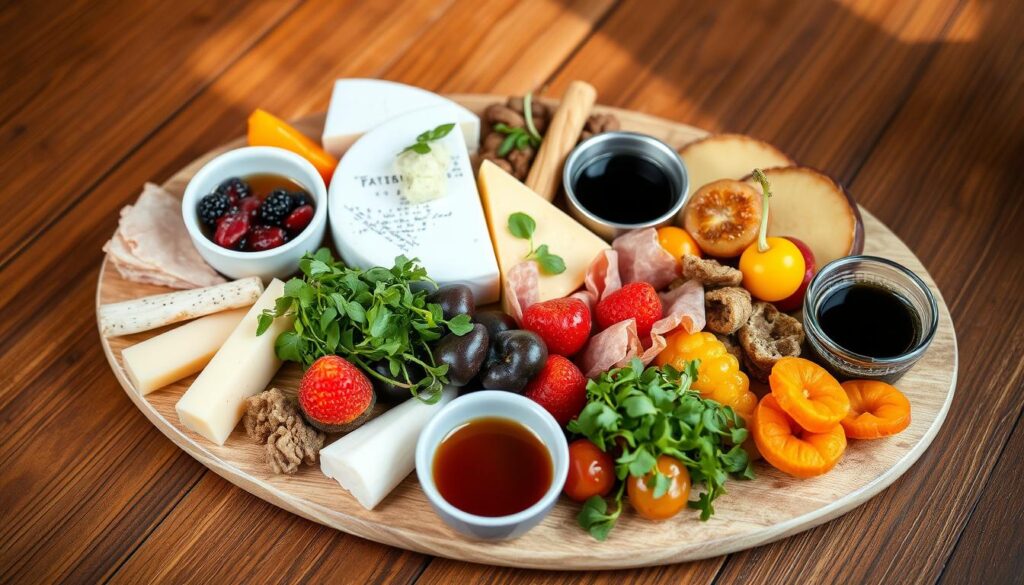
Encouraging experimentation is key. You can embrace complexity by mixing various flavors and spices to craft your unique signature dishes. The culinary landscape thrives on innovation, pushing you to explore new boundaries in flavor combinations while appreciating the depth of sophisticated flavor profiles.
Experimenting with Seasonings
Exploring the wide world of seasonings opens up a realm of culinary possibilities. By experimenting with diverse spice blends and fresh herbs, you can achieve remarkable flavor enhancement in your dishes. The right seasoning techniques enable you to transform everyday ingredients into extraordinary meals that excite the palate.
Diverse Spice Blends Around the World
Diverse spice blends from various global cuisines introduce unique flavor components that can elevate your cooking. For instance, Moroccan ras el hanout combines spices like cumin, coriander, and cinnamon, offering a warm, complex taste profile. Indian garam masala features cardamom, cloves, and nutmeg, adding richness to both vegetarian and meat dishes. Investigating these blends not only enhances your meals but also enriches your culinary knowledge.
Fresh Herbs and Their Impact on Dishes
Fresh herbs play a vital role in culinary creations by enhancing flavor and aroma through their vivid qualities. Herbs like basil, cilantro, and rosemary bring freshness to a wide array of dishes. Integrating fresh herbs at the right stage of the cooking process allows their natural oils to infuse into the meal, creating vibrant taste experiences. Understanding the individual flavor profiles of herbs assists you in selecting the most complementary options for your recipes.

| Spice Blend | Cuisine | Main Ingredients | Flavor Notes |
|---|---|---|---|
| Ras el Hanout | Moroccan | Cumin, Coriander, Cinnamon | Warm, Sweet, Aromatic |
| Garam Masala | Indian | Cardamom, Cloves, Nutmeg | Rich, Spicy, Earthy |
| Za’atar | Middle Eastern | Thyme, Sumac, Sesame | Herbaceous, Tangy, Nutty |
| Herbes de Provence | French | Thyme, Rosemary, Oregano | Floral, Savory, Earthy |
Experimenting with these diverse spice blends and fresh herbs allows you to create unique flavor combinations. The more you explore, the more you’ll understand the art of seasoning techniques and how they contribute to flavor enhancement in your culinary endeavors. Additionally, experimenting with different combinations of spices and herbs can help you to better understand how they complement and enhance different types of dishes. Cooking with aromatic herbs such as basil, rosemary, and thyme can add depth and complexity to your dishes, elevating them to a whole new level of flavor. By continuously experimenting with different seasoning techniques and fresh herbs, you can elevate your culinary skills and create truly memorable meals.
Mastering Elevated Flavor Combinations
Exploring the art of combining flavors can lead to truly remarkable culinary experiences. The key lies in understanding how to create flavor harmony through both complementary pairings and daring unconventional pairings. By tapping into contrasting flavors or blending familiar tastes, you can elevate your dishes beyond the ordinary.
Complementary Pairings for Flavor Harmony
Classic combinations often provide a solid foundation for flavor harmony. The flavor wheel categorizes tastes into primary, secondary, and tertiary layers, allowing chefs to skillfully mix flavors from various categories. Here are some notable pairings:
- Salt and sweet—creates balance
- Acid and fat—cuts through richness
- Spicy and cool—offers contrasting elements
- Savory and sweet—provides a delightful counterpoint
- Herbs and citrus—adds layers of flavor
The presence of shared aroma compounds, such as vanillin found in both vanilla beans and oak barrels, exemplifies how certain ingredients can enhance the complexity of a dish. This can be observed in the delicious pairing of oak-aged Chardonnay or red Bordeaux wines, enriching your culinary repertoire.
Unconventional Pairing Ideas to Surprise Your Palate
Stepping outside the box can lead you to exciting and unexpected flavor combinations. Experimenting with contrasting flavors can produce delightful culinary surprises. Consider trying:
- Bacon and maple syrup
- Watermelon and feta cheese
- Chocolate and chili pepper
- Popcorn and Sriracha
These unconventional pairings highlight how unlikely ingredients can create delectable harmony in dishes. The modern trends in molecular gastronomy introduce innovative techniques like spherification and foaming, allowing adventurous chefs to push the boundaries of flavor combinations.
Global fusion cuisine encourages the merging of culinary traditions, such as blending Japanese and Mexican flavors in a sushi burrito or wrapping traditional pho in a taco. This fusion approach opens the door for creativity, allowing you to explore limitless possibilities for elevated flavor combinations.

Understanding and embracing these pairing techniques will not only enhance your kitchen creations but also elevate your overall dining experiences. Dive into the world of flavor and let your culinary imagination take flight.
The Power of Texture in Culinary Creations
Texture in food significantly enhances your dining experience, elevating not only the flavor impact but also the visual appeal of the dish. The right combination of textures can make or break the overall impression of a meal. Understanding how to manipulate culinary texture opens a world of delicious possibilities, making every bite an exploration of delightful contrasts.
Adding Crunch and Creaminess to Your Dishes
Incorporating elements such as crispy and creamy textures can create a memorable interplay on your palate. For instance, the pairing of avocado with toasted nuts provides a satisfying crunch that perfectly contrasts the smoothness of the avocado. This idea mirrors the advice from chefs who emphasize the importance of various textures. Dishes that masterfully combine different textures offer a fuller dining experience.
How Cooking Methods Affect Texture and Flavor
Different cooking methods play a crucial role in achieving the desired texture in food. Techniques such as grilling, frying, and sautéing each produce unique effects. Here’s a breakdown of some common methods and their typical texture outcomes:
| Cooking Method | Texture Achieved | Flavor Impact |
|---|---|---|
| Grilling | Crispy exterior, juicy interior | Enhances smoky flavors |
| Frying | Crunchy, golden-brown | Brings out savory notes |
| Baking | Golden crust, soft middle | Creates a balance of sweetness |
| Sautéing | Tender yet firm | Concentrates flavors through caramelization |
| Slow-cooking | Melts-in-your-mouth | Deepens complex flavors |
When chefs focus on food texture, it allows them to not only enhance flavor but also make plates visually appealing. The balance of crispy, creamy, and chewy elements is crucial for creating extraordinary dishes that captivate the senses. By recognizing the importance of culinary texture, you can transform simple ingredients into gourmet experiences.
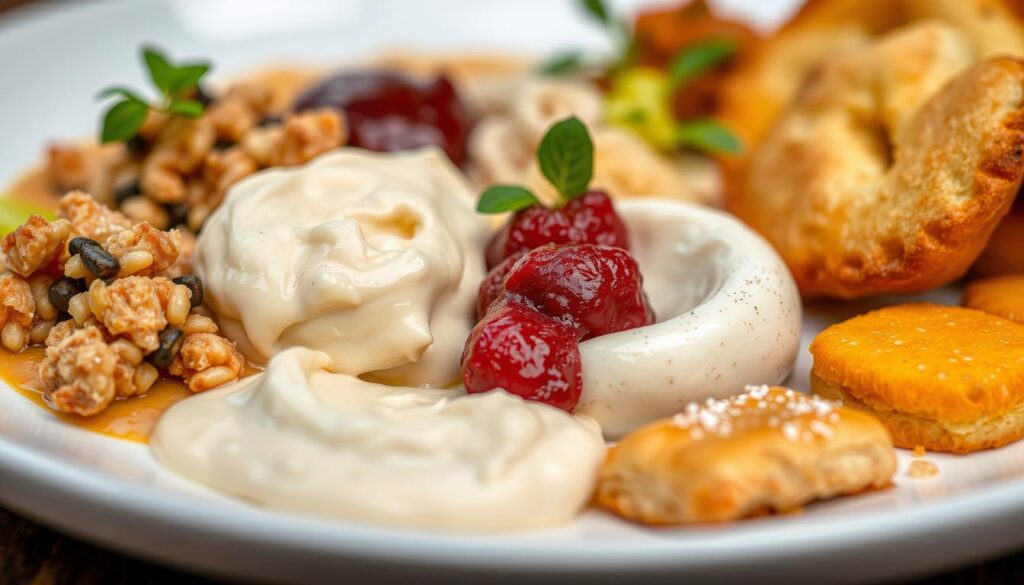
Inspiration from Global Cuisine
Exploring the richness of global cuisine inspiration opens up a world of possibilities in your kitchen. You can learn from diverse culinary traditions that have shaped the way people savor food around the globe. By understanding these traditions, you enrich your cooking with international flavors that encapsulate the essence of various cultures.
Learning from Diverse Culinary Traditions
Many culinary traditions have stood the test of time, often influenced by the stability of governments and their economic prosperity. Famous chefs, such as Marie Antoine Careme and Pierre Gagnaire, have contributed significantly to culinary innovations while celebrating local ingredients. Take inspiration from classic ethnic cuisines, where authenticity is defined by unique combinations of herbs, spices, and indigenous elements.
- Asian Cuisine: Discover the balance of sweet, sour, salty, and spicy in Thai dishes like Pad Thai and Tom Yum Goong, highlighting ingredients such as lemongrass and chili.
- European Cuisine: Dive into German cuisine’s hearty staples like Sauerbraten, while seeing how it blends lighter, health-conscious options with international influences.
- Middle Eastern Cuisine: Experience bold flavors through staple ingredients such as dates and olive oil, paired with unique cooking methods like the tandoor oven.
- African Cuisine: Explore the vast variations across the continent, from North African Tagine to West African Jollof Rice and the fusion of indigenous and international flavors in East Africa.
Incorporating International Flavors into Everyday Dishes
Integrating international flavors into your daily meals can lead to exciting and unique culinary experiences. Fusion cooking becomes innovative when approached with respect for ethnic cultures and a well-informed palate. By borrowing and adapting ingredients from around the world, you can elevate simple dishes with an intricate layer of flavors. As highlighted by recent trends, cuisines like Thai, Korean, and Oaxacan have seen explosive growth, demonstrating an appetite for diverse tastes.

| Cuisine | Signature Flavors | Iconic Dishes |
|---|---|---|
| Thai | Sweet, sour, salty, spicy | Pad Thai, Tom Yum Goong |
| German | Hearty, rich, modern twists | Sauerbraten, Wurst |
| Middle Eastern | Olive oil, dates, pomegranate | Naan, Tandoori Chicken |
| African | Spicy, bold, diverse | Tagine, Jollof Rice |
With these insights, you can embark on a culinary adventure that transcends borders, welcoming the flavors of the world into your everyday meals.
Embracing Seasonal and Local Produce
Many culinary enthusiasts are recognizing the value of seasonal cooking, especially when it comes to using local produce. Sourcing fresh ingredients not only enhances the taste of your dishes but also elevates the overall cooking experience. By choosing ingredients that are in season, you can celebrate the unique and varied seasonal flavors available in your region.
The Benefits of Fresh, Seasonal Ingredients
Utilizing fresh, seasonal ingredients comes with numerous benefits that elevate any meal. Here are some key advantages:
- Peak Flavor and Quality: Seasonal produce is often harvested at its prime, ensuring the best taste and nutritional value.
- Support for Local Farmers: Buying from local markets helps sustain community agriculture and promotes responsible farming practices.
- Enhanced Menu Appeal: Dishes crafted with local produce often have a unique flavor profile that is more appealing to consumers.
- Environmental Benefits: Sourcing local ingredients reduces transportation emissions, contributing to a healthier planet.
Highlighting Seasonal Flavors in Your Cooking
Incorporating seasonal flavors into your recipes can create a delightful culinary experience. By focusing on ingredients like apples in the fall or strawberries in the summer, you can craft dishes that resonate with the time of year. For example:
- Using apples and caramel together can create an irresistible dessert that embodies the flavors of autumn.
- Strawberry combinations like Strawberry Kiwi and Strawberry Guava can brighten up any dish, offering a refreshing touch during warmer months.
- Experimenting with chocolate flavors, such as Chocolate Mint or Chocolate Raspberry, can bring warmth to your desserts during chilly evenings.
- Citrus flavors, such as Jalapeno Lime, can add a vibrant wow factor, perfect for revamping salads and sauces.
By embracing the concept of seasonal cooking, you can create memorable dishes that highlight the diversity of local produce. This approach not only enhances flavor but also strengthens your connection to the food community. Let the vibrant offerings of your region inspire your culinary creativity.
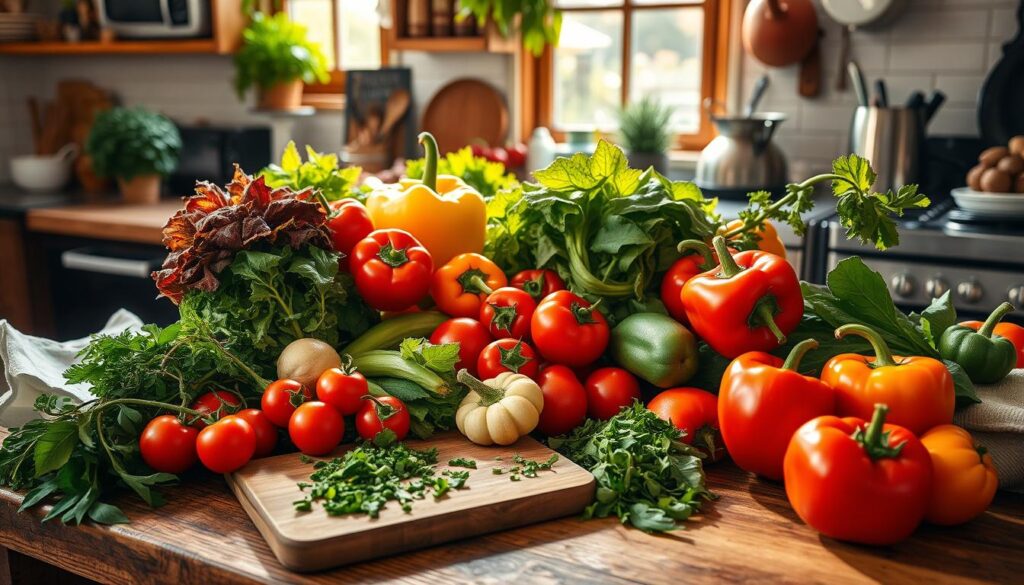
The Art of Presentation
In the world of culinary art, food presentation plays a crucial role in elevating your dishes from ordinary to extraordinary. The visual appeal of a meal significantly influences taste perception, shaping diners’ overall experiences. When dishes are thoughtfully arranged, they not only beautify the table but also engage the senses, making every bite more enjoyable.
Visual Appeal and Its Influence on Taste Perception
Understanding the elements of food presentation is vital for those in the culinary field. Well-executed plating techniques are essential for professional growth and can create a lasting impression on customers. In fact, at Sonsie, 85% of diners reported that they are more inclined to select a dish that catches their eye. By focusing on vibrant colors, textures, and thoughtful portion sizes, chefs can craft plates that not only satisfy hunger but also entice the palate through enhanced taste perception.
Consider the following key aspects of food presentation:
- Color selection: Utilizing a palette of vibrant ingredients can elevate food presentation, leading to a 70% increase in customer satisfaction.
- Portion size: Balancing the amount of food on the plate ensures a clean and appealing aesthetic while remaining practical for diners.
- Textures: Combining different textures invites curiosity and contributes to an engaging dining experience.
As visual appeal continues to drive social media engagement, artfully arranged dishes have become highly shareable. A staggering 95% of patrons express greater enjoyment in their meals when surrounded by beautifully presented food. Moreover, 75% of visitors mention that presentation significantly influences their recommendations of restaurants to others.
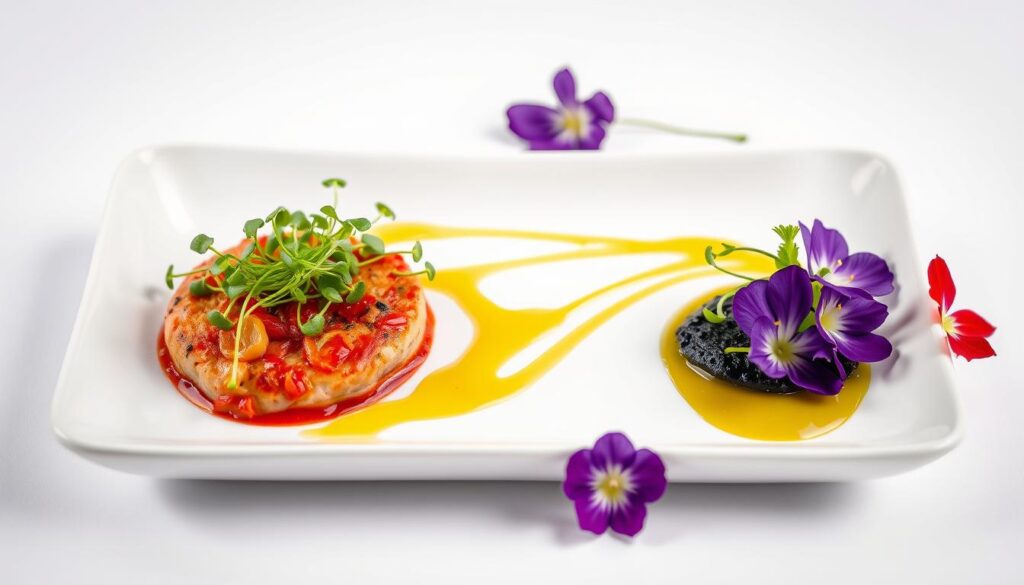
By investing time in mastering plating techniques and understanding the nuances of food presentation, culinary professionals can transform dining moments into unforgettable experiences. Observing these principles not only attracts more customers but also significantly increases foot traffic, as seen with Soulsie, which reported a 60% increase after emphasizing the art of food presentation. Ultimately, the beauty of a dish complements its taste, intertwining the visual and culinary worlds for an elevated dining experience.
Developing Your Refinement Palate
Refining your palate enhances both your cooking and tasting experiences, allowing for greater appreciation of flavors. The journey towards flavor mastery incorporates several techniques, including honing your tasting skills. By becoming more aware of the subtle nuances in various ingredients, you can elevate your culinary creativity and confidence in the kitchen.
Practicing Tasting Skills for Flavor Mastery
To truly develop your palate, regular practice is essential. Start by focusing on smells, as up to 80% of flavor perception relies on your sense of smell. Engage your senses by trying to identify various aromas in ingredients such as herbs, spices, and wines. Here are some techniques to consider:
- Engage in blind tastings with a variety of foods and beverages.
- Use descriptive language to articulate flavor profiles, enhancing your vocabulary.
- Practice identifying secondary flavors and aromas, such as fruity notes or earthy undertones.
- Experience comparative tastings to highlight differences and similarities among similar items.
Describing Flavors to Enhance Culinary Creativity
Being able to describe what you taste opens doors to culinary creativity. A refined palate involves distinguishing between various flavors and incorporating that knowledge into your cooking. Pay close attention to textures, finishes, and visual aspects as you explore your ingredients. For instance, consider the impact of:
| Aspect | Description |
|---|---|
| Texture | Assessing how foods feel in the mouth can influence overall enjoyment. |
| Finish | The lingering aftertaste provides insights into the intricacies of flavors. |
| Aroma | Identifying aromas can enhance the tasting experience significantly. |
| Visual Observation | The color and viscosity of beverages reveal information about the aging process. |

With these techniques and insights, you are on the path to developing a refined palate, enhancing your flavor mastery and culinary creativity. The ability to articulate what you taste will not only improve your cooking but also elevate your overall dining experiences.
Conclusion
Throughout this exploration of sophisticated flavor profiles, you’ve discovered the essential components that contribute to creating gourmet taste experiences. By understanding the basics of flavor, from sweetness to umami, you’ve gained valuable insight into how these elements work harmoniously to elevate dishes and beverages alike. Your culinary exploration can be transformed into something extraordinary when you embrace the endless possibilities of flavor pairings and the unique textures they offer.
This journey has revealed exciting trends in the culinary world, such as the rising popularity of floral flavors and the demand for adventurous, intense combinations. As you experiment with ingredients like chamomile and tropical fruits, remember that innovation is key in creating exceptional flavors that tie back to your personal tastes and experiences. The emergence of health-conscious and natural flavors adds another layer to consider, encouraging you to step outside your comfort zone and explore new ingredients.
By integrating these techniques into your cooking routine, you’re not just enhancing your dishes—you’re crafting memorable dining adventures. Let the enticing aromas and diverse tastes guide your journey, and embrace the creativity that comes with experimenting in the kitchen. Elevate your culinary skills with passion, and relish the joy of discovering sophisticated flavor profiles that captivate your palate.

